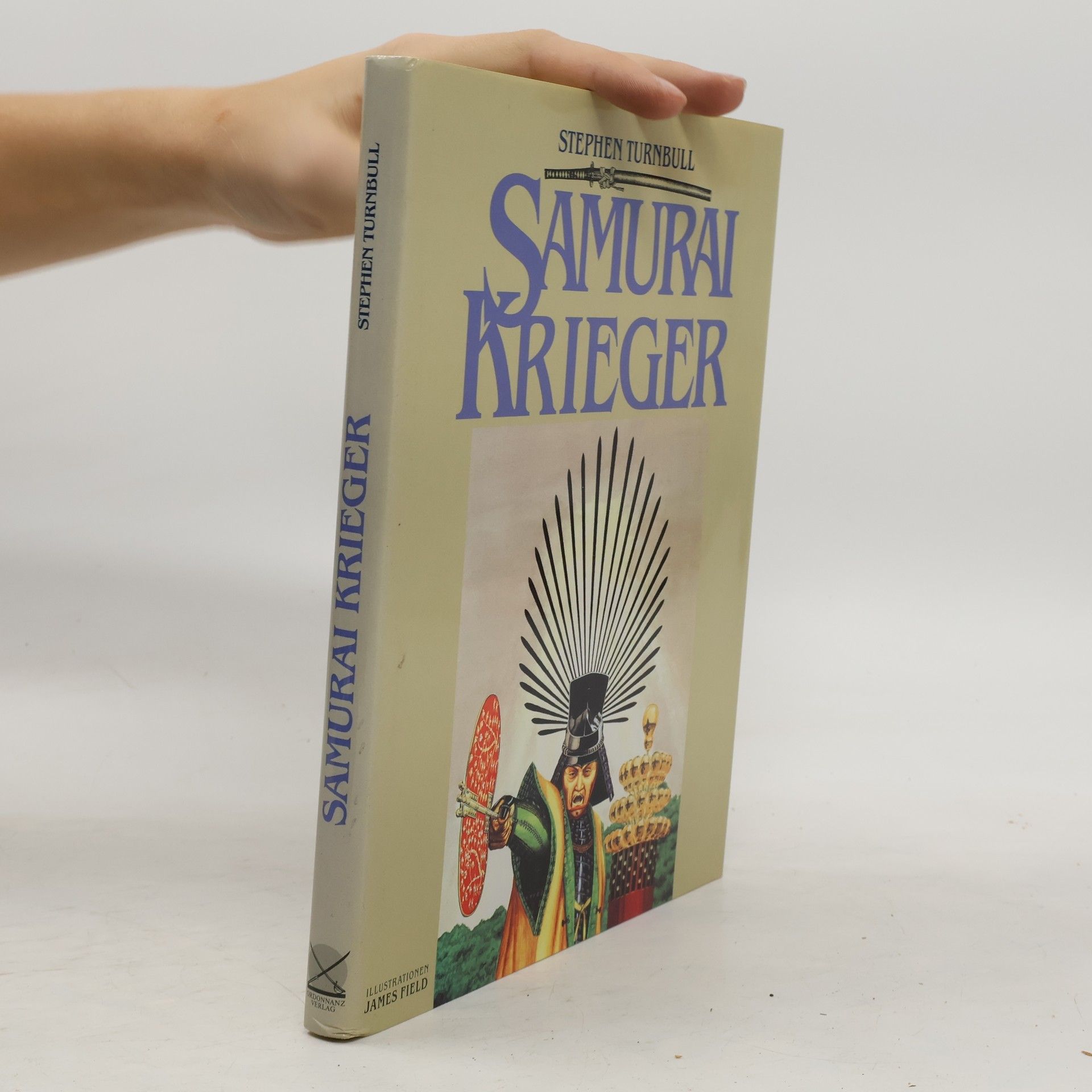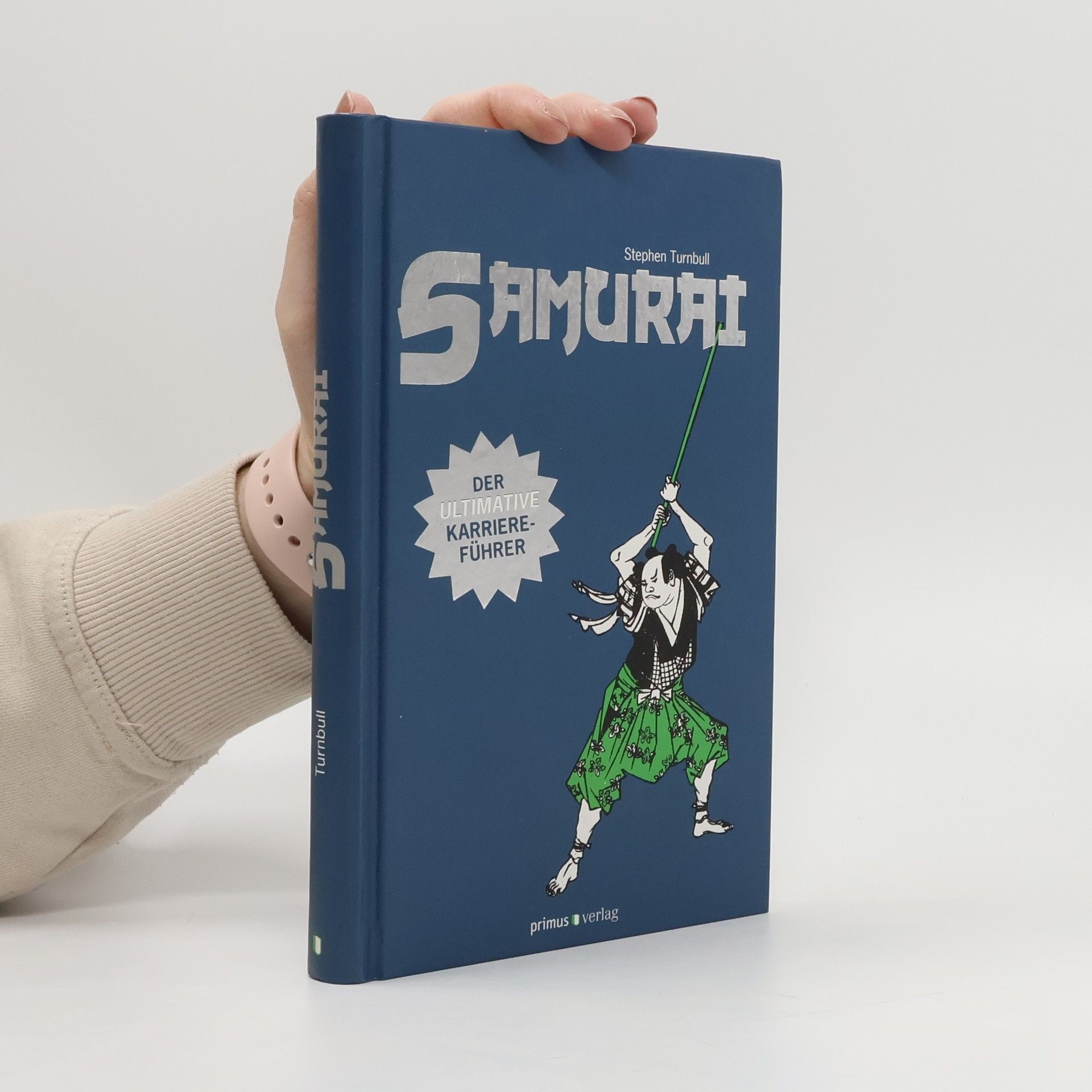The narrative uncovers the fascinating history of Japanese samurai who, for nearly a century, served as mercenaries across Southeast Asia and Europe. Engaging with kings of Siam, Cambodia, and Burma, as well as European powers like Spain and Portugal, these warriors played a significant role in international conflicts and trade. This exploration sheds light on an often-overlooked chapter of samurai heritage, revealing their adaptability and influence beyond Japan's borders.
Stephen Turnbull Reihenfolge der Bücher
Stephen Turnbull ist ein britischer Historiker, der sich auf die Militärgeschichte des Fernen Ostens, insbesondere der Samurai Japans, spezialisiert hat. Seine Arbeit konzentriert sich auf japanische und mongolische Themen und befasst sich auch mit mittelalterlichen Stoffen. Er lehrt an der University of Leeds über Religionen des Fernen Ostens. Seine Schriften werden für ihre tiefen Einblicke in Militärgeschichte und Kultur geschätzt.







- 2025
- 2024
Focusing on the evolution of warfare in mainland Southeast Asia during the Early Modern Period, this book offers a detailed and illustrated exploration of military practices. It highlights the transition from medieval tactics dominated by war elephants to the incorporation of firearms in conflicts between Burma and Siam. The narrative includes thrilling sieges, naval battles, and cultural beliefs surrounding omens and foreign mercenaries. Enhanced by photographs, maps, and unique artwork, it vividly depicts the arms and strategies of Southeast Asian warriors and their elephants.
- 2023
Featuring specially commissioned artwork and maps, carefully chosen illustrations and insightful analysis, this book examines the legendary Mongol warriors and their vastly different European opponents. Having conquered much of Central Asia by 1237, the Mongols advanced into the northern Caucasus. The fall of several key centres such as Riazan and Vladimir was followed by Mongol victory at Kiev. Moving west, in 1241 two Mongol armies achieved stunning victories at the battles of Liegnitz in Poland and the Sajo River (Mohi) in Hungary, before suffering their only reverse of the campaign at the fortress of Klis. The Mongol forces regrouped in Hungary to prepare for a further advance into Austria and Germany, but the death of their leader, Ogedei Khan, meant that his generals were required to return to Mongolia to choose a successor. Smaller Mongol forces would return to raid in the years to come, but never again would Western Europe be threatened as it was in 1242. Fully illustrated, this innovative study of the forces that clashed during the Mongol invasion of Europe between 1237 and 1242 allows a comparison to be made between the all-conquering nomad horsemen of the steppes and the mounted knights of the West.
- 2023
- 2022
The Ōnin War was the key turning point in samurai warfare. There had been conflicts before, but what made the Ōnin War unique was the fierce street-fighting that went on within Kyoto itself. The battles were conducted from fortified mansions, which were surrounded by stout wooden walls and ditches and sported tall observation towers.
- 2022
Fully illustrated with colour maps and 50 images, this is an accessible introduction to the most violent, turbulent, cruel and exciting chapter in Japanese history.In 1467 the Onin War ushered in a period of unparalleled conflict and rivalry in Japan that came to be called the Age of Warring States. In this book, Stephen Turnbull offers a masterly exposition of the wars, explaining what led to Japan's disintegration into rival domains after more than a century of relative peace; the years of fighting that followed; and the period of gradual fusion when the daimyo (great names) strove to reunite Japan under a new Shogun. Peace returned to Japan with the end of the Osaka War in 1615. Turnbull draws on his latest research to include new material for this updated edition, covering samurai acting as mercenaries, the expeditions to Korea, Taiwan and Okinawa, and the little-known campaigns against the Ainu of Hokkaido, to present a richer picture of an age when conflicts were spread far more widely than was hitherto realised.With specially commissioned maps and all-new images throughout, this updated and revised edition provides a concise overview of Japan's turbulent Age of Warring States.
- 2021
Weapons of the Samurai
- 80 Seiten
- 3 Lesestunden
Featuring specially commissioned artwork, this lively study assesses the array of weapons and equipment employed by the samurai, Japan's legendary warriors. This fully illustrated new book describes and analyzes the weapons and equipment traditionally associated with the samurai, Japan's superlative warriors. It examines the range of weapons used by them at different times and in different situations. Beginning with the rise of the samurai during the 10th century, this lively study traces the introduction of edged weapons (cutting and piercing) and missile weapons (bows and guns) over the next 500 years. The book shows clearly how they were employed by individual samurai using many previously untranslated primary texts, and explains how their use spread more widely among low-class troops, pirates, and rebels. It also shows how schools of martial arts took over and changed the weapons and their uses during the peaceful Edo Period (1615–1868).
- 2021
The first ever account of Japanese overseas mercenaries.
- 2019
Tanaka 1587
- 128 Seiten
- 5 Lesestunden
This unique book tells for the first time the violent story of the siege of Tanaka based on never-before translated war chronicles, maps, and fieldwork.
- 2018
Pirate
- 216 Seiten
- 8 Lesestunden
A lively yet historically accurate guide: how to dress like a pirate, what to expect of life on the high seas, and how to capture treasure